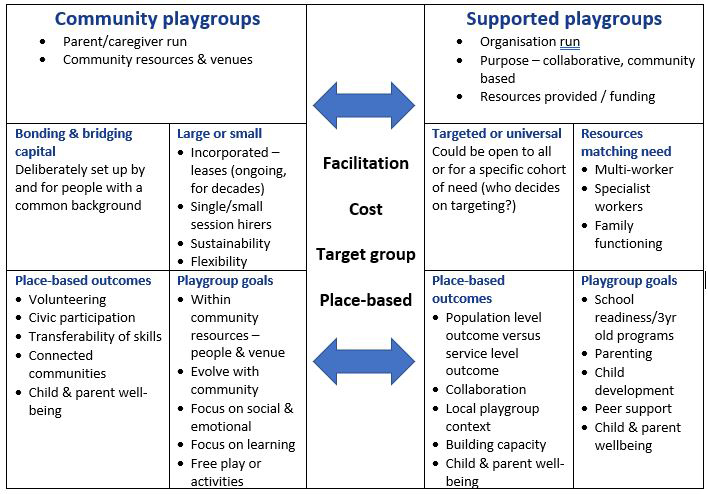Playgroup Types
Different types of playgroups have often been portrayed in a pyramid format with community playgroups depicted as the base (or universal element) and supported playgroups of varying level of facilitation intensity, progressively leading to a pinnacle of highly targeted groups. This representation assumes that families attend playgroups that are suited to their level of need and that playgroup models are designed according to need.
We believe that these theoretical assumptions are rarely based on the available playgroup mix in any given community and that what the pyramid approach more accurately represents is the cost associated with different playgroup types. There are many capable families that attend supported playgroups and there are many vulnerable families that participate in community playgroups. There are also families that attend both varieties for different purposes.
Similarly, many of the people that participate in community playgroups have as much professional expertise as the paid facilitators in supported playgroups. We make this point to highlight the richness of the playgroup sector and to encourage more intentional place-based understanding and planning of the local playgroup context to ensure an appropriate and complementary mix of opportunities.
The following table provides an overview of some key features of community and supported playgroups. It reflects that while there are some core differences, there are also features that can apply to either community or supported playgroups.

